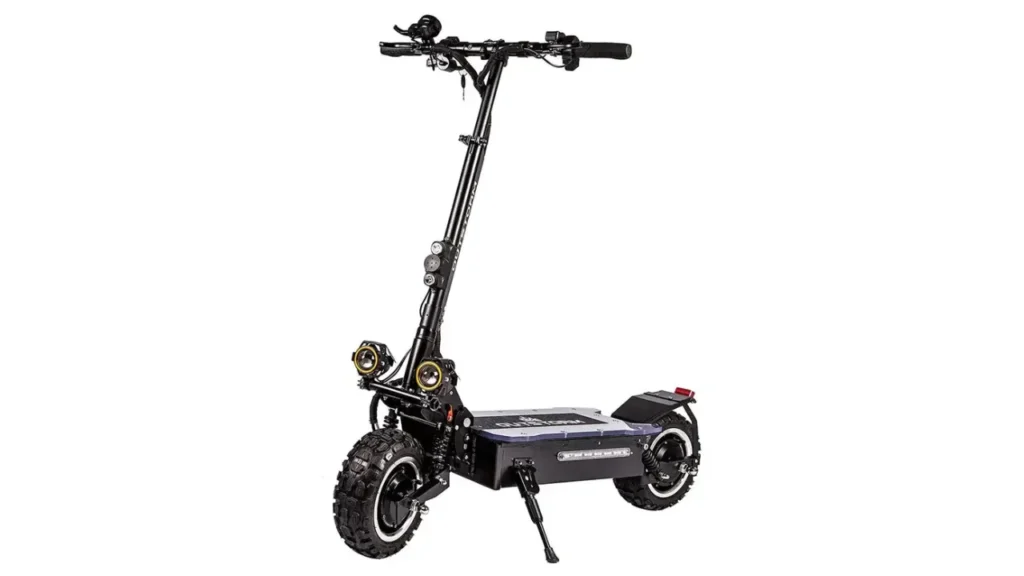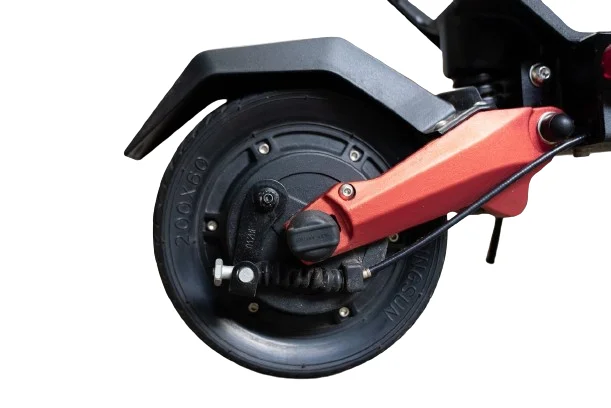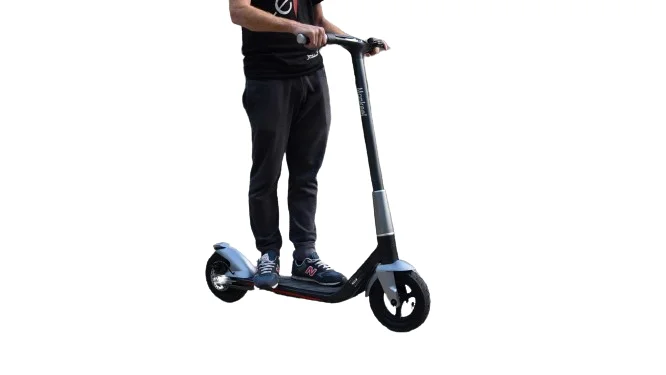Electric scooters are a fun and eco-friendly way to get around the city, but how long do electric scooters last?
This is a common question that many potential buyers and owners have, as they want to make sure they get the most out of their investment.
The answer is not so simple, as there are many factors that affect the lifespan of an electric scooter, such as the quality of the components, the frequency and intensity of use, the maintenance and care, and the environmental conditions.
In this blog post, we will answer how long electric scooters last. We will also explore the factors that affect the lifespan of e-scooters. And you will learn how to prolong the lifespan of your electric scooter .
Read on to find out more!
- Also Read: How to Lock an Electric Scooter
- Also Read: Benefits of Wearing E-Scooter Helmet
- Also Read: Range of E-Scooters
- Also Read: How to Fix E-Scooter Throttle
What is the Average Lifespan of an Electric Scooter?
There are many variables that affect how long an electric scooter lasts. The quality and price of the scooter also make a difference. On average, an electric scooter can run for about three years.
The scooter will perform well in the first two years, with minimal loss of efficiency. In the third year, the efficiency will decline a bit, and it may not be as good as a new one.
As time passes, the scooter will lose more efficiency. This will result in shorter distances, slower speeds, and more frequent repairs.
Why Invest in a Quality Electric Scooter?

The market has many different electric scooter models from various brands. However, not all of them have good quality or durable parts, which affects how long they last.
A cheap electric scooter may start having problems after a year. But scooters from the top brands can give you a long-lasting performance of up to 5 years.
The battery is the part that usually wears out first in an e-scooter. E-scooters typically have either lithium-ion batteries, lead-acid batteries (SLA), or nickel-metal hybrid batteries (NiMH).
Most e-scooters use lithium batteries because they are lighter and smaller than the other kinds. They also have better performance and battery life than the other types.
An e-scooter with a quality lithium battery and other quality parts can last up to 5 years. They also need less maintenance.
The Lifespan of Rental Electric Scooters
The lifespan of rental electric scooters is very short, ranging from 1 to 5 months. On the other hand, privately-owned e-scooters can last for 2 to 3 years or more with proper care and maintenance.
The reason for this huge difference is that privately-owned e-scooters are well-protected by their owners, while rental scooters are exposed to rain and bad weather, which damages them quickly.
Private owners also fix their electric scooters when they break down, and they do not use them as much as the rental ones, so they extend their lifespan.
Factors That Affect How Long an Electric Scooter Lasts
Below are the factors that affect the lifespan of an electric scooter:
Quality of the Electric Scooter Components
High-quality components are made to endure the wear and tear of regular use, which leads to better performance and durability.
Brands like Kaabo, Dualtron, EMOVE and Fiido, are famous for making high-quality electric scooters and keeping high standards of quality control.
They make sure that all of the products that they offer are made of sturdy and well-crafted materials, so scooter owners can keep riding for a long time.
This is exactly why they are top brands that are well-known for creating high-quality, dependable electric scooters with durable components.
Below are the main components that form an electric scooter. You can often fix or replace these parts, and prolong how long you can use your electric vehicle.
E-Scooter Battery

An electric scooter cannot function without its battery, which is one of the most vital and costly components of the vehicle. Most electric scooters use lithium-ion batteries, which are also common in many electronic devices, such as smartphones, laptops, and tablets.
Lithium-ion battery cells have a high energy density, which means they can store a lot of power in a small space. They can also recharge fast, which makes them suitable for most purposes.
Generally, Li-ion batteries can endure 300 to 500 charging cycles before their capacity starts to decline. This means that an electric scooter battery can last for about 3,000 to 5,000 miles (4,800 to 8,000 km), depending on how well it is taken care of.
When a battery begins to deteriorate, you may notice that it does not reach its maximum charge (100%). Even though the battery still operates, it does not perform as well as it did when it was new.
Some electric scooters for adults are designed with parts that can be changed. Some of them have electrical parts that are easy to connect and disconnect, so you can simply take out the old battery and put in a new one.
This means that you can change the scooter batteries when they get old, which makes the scooter last longer. Some scooters have a battery that you can take out and put back in. This lets riders switch a low battery for a full one, which is very convenient and flexible.
You can have an extra battery to switch, or just put in a new battery when the old one runs out. For most scooters, you have to open the deck and unplug some wires to change the battery. But with batteries that you can swap, it’s much easier to ride without stopping and changing the battery when you need to.
Follow these basic charging tips to make sure your electric scooter’s battery lasts longer:
- Use only the standard charger that comes with the scooter to avoid problems and keep the warranty.
- Don’t use fast chargers often or at all to avoid damaging the battery.
- Keep battery contacts clean and ports covered to avoid rust.
- Charge the battery every few weeks to keep it in good condition and to avoid running out of power.
- Unplug the scooter from the charger when it reaches 100% to avoid overcharging.
- Keep the electric scooter in a place that is cool and dry when you are not using it to avoid extreme temperatures.
E-Scooter Motor

The motor is a crucial part of any electric scooter, as it affects how well it performs. Hub motors are the most common type of motors, and they are built into the front and/or rear wheel.
If the motor fails, you can usually swap it with a new one, just like the battery. You can tell if the motor is faulty by noticing any jerking or loss of power when you ride.
Your dashboard will also show an error code and/or symbol if there is something wrong with the motor, controller, or other components. Some e-scooters have two motors (one for each wheel) while others have one motor.
The EMOVE Cruiser S has a single 1000W motor in the rear wheel that gives you a smooth and quiet ride. It also has a sine wave controller, which makes it more efficient than other entry-level scooters.
With a range of up to 62 miles and a speed of up to 33 mph, this motor is durable and easy to maintain. If you ever feel that the motor is not powerful enough, you can easily replace it with a new one—and enjoy a fresh scooter experience!
E-Scooter Frame

The durability and longevity of an electric scooter depend largely on its frame, which is a vital component. The frame’s material and construction determine how much weight and stress it can bear.
For example, the EMOVE Touring is a budget-friendly electric scooter with an aluminum frame that is both light and strong, capable of holding up to 308 lbs.
Aluminum and forged steel are common materials for scooter frames, as they can resist impact and be molded as needed.
The frame also protects the other parts of the scooter, such as the motor and battery, from damage caused by force and vibrations during rides.
Some parts of the frame, like the fender, can get damaged by accident and need to be replaced over time. The best way to avoid damaging the frame is to use the scooter properly.
Sometimes, accidents like falling over or hitting a curb are unavoidable. But you can prevent damage by avoiding risky actions, such as riding your scooter off a high elevation onto uneven terrain or carrying too much weight regularly.
E-Scooter Tires

Tires are different from the other parts mentioned, as they are meant to be worn out and changed—not last forever. There are various types of tires, such as solid and pneumatic.
Pneumatic or air-filled tires are the most popular, and provide the best ride comfort. Also, tires have different patterns that make them more fit for certain terrain.
Commuter e-scooters have street tires that give great grip and range on city roads. Off-road electric scooters have knobby tires to deal with rocky, uneven roads. However, off-road tires can lower the overall range of your electric scooter, as they touch the ground less so work less effectively.
Besides performance benefits, tires are also important for rider safety. High quality tires offer better traction and handling, lowering the chance of accidents and making the scooter last longer.
The Kaabo Mantis Pro SE electric scooter is a good example, with 10″ pneumatic tires that offer superb grip and shock absorption, letting riders easily travel on various terrains, such as rough roads, bumps, and potholes. The tires have thick and strong rubber that helps avoid punctures and ensures a longer lifespan than cheaper options.
E-Scooter Brakes

The brake pads and brake rotors are parts of the brakes that can wear out over time. The rotor can last for a long time if you take good care of it, but it can get damaged by accidents or rough handling. The brake pads need to be changed regularly and kept clean to make sure they touch the rotors properly.
The brake levers or brake lines can also get broken if your scooter falls or hits something. Luckily, you can replace any of these parts if they get damaged, so you can keep using your electric scooter.
The Kaabo Mantis King GT electric scooter has a strong braking system with hydraulic disc brakes on both the front and back wheels. This gives you a lot of control and stopping power. But if you brake too hard or too often, you can put a lot of pressure on the brake system and make it wear out faster. This can affect how well it works and make it more expensive to fix or replace.
To prevent this, it’s better to use the brakes gently and smoothly, instead of making sudden and hard stops. It’s also important to check and maintain your e-scooter’s braking system regularly to keep it in good shape.
Frequency of Use
The more you use your scooter, the more its parts will degrade, such as the battery, motor, and tires.
For instance, if you use an electric scooter daily, often reaching its 40 mph maximum speed, you are putting more strain on your vehicle than someone who only uses it at 15 mph on the weekends.
Frequent use also raises the risk of crashes or impacts, which can cause more harm to the scooter and reduce its longevity.
Environmental Factors
Rust and corrosion can weaken the electric scooter if it is exposed to very hot or cold temperatures, dampness, and wetness.
Also, using it often on rough and bumpy roads can put pressure on the frame and make the tires degrade faster, shortening the scooter’s lifespan.
Riding Habits
The lifespan of an electric scooter depends on how the user treats it. Careless behavior, such as using the scooter in dangerous areas or putting too much weight on it, can harm the motor, battery, and frame, making it last less.
Many times, this behavior can also cancel your warranty, as electric scooter’s have different max loads depending on what their parts can handle and going beyond that, along with poor maintenance, nullifies the warranty.
Factors That Decrease the Lifespan of an Electric Scooter
Your electric scooter will last longer if you keep it indoors and away from bad weather. Your scooter is not designed to handle rain, damp, or snow. These conditions can damage the electrical components, the electric motor, the brakes, and the wheel bearings.
Rideshare electric scooters have a shorter lifespan because they are often left outside. Water can ruin them in no time.
Dust is another enemy of your e-scooter. It can get into the smallest cracks and crevices. It can cause serious damage to the electric motor if it accumulates too much.
Temperature extremes also affect your e-scooter. Lithium-ion batteries are sensitive to very high temperatures. Electric motors have to work harder in very low temperatures.
Careless riding is another factor that can shorten the life of your e-scooter. You should avoid excess weight, potholes, rocks, and curbs. They can all harm your e-scooter.
How to Increase Lifespan of Your Electric Scooter?
The following maintenance tips can help you increase the lifespan of your electric scooter:
Keep it Clean
Dirt, debris, or grime can build up on your electric scooter over time, so make sure to clean it regularly. Use a cloth to wipe the deck to maintain good grip on the scooter.
Clean the brake pads and rotors especially after riding on rough terrain, to keep your braking power at its best. This will also protect your scooter from rust and make it look new.
Check the Tire Pressure
Your tires need to be inflated to the right pressure for your electric scooter to perform well and avoid punctures. Inflate them to the pressure level that is recommended and check them often.
Look at the tire tread as well, and replace them when they get too worn out.
Lubricate Moving Parts
Moving parts of your electric scooter, such as the brakes and handlebars, need to be lubricated to prevent them from getting stuck or breaking down.
If your scooter has hydraulic parts, you may need to change the fluids and fix them if needed. You don’t have to do this very often, but it will help your scooter last longer.
Charge the Battery Properly
Follow the best practices for the battery that we gave you. The most important thing is to always use the charger that came with your electric scooter and charge it according to the manufacturer’s instructions.
Don’t overcharge or undercharge the battery, as this can harm it and shorten its life.
Store it Properly
Store your electric scooter in a cool, dry place that is not exposed to direct sunlight and avoid places with very high or low temperatures or humidity. The battery is affected by temperature, so the best place is indoors or in a garage, where the weather is more stable.
If you are not using your e-scooter for a long time, you may want to lift it so the wheels are not touching the ground. This will prevent the tires from losing shape and air over time.
If your scooter has electronic security features, like a key fob or an ignition, you may want to disconnect them when storing your scooter for a long time to save the battery. Proper storage will ensure your electric scooter is ready to ride when you are.
Perform Regular Maintenance Checks
Check your electric scooter regularly for any wear or damage, such as loose screws, worn brake pads, or damaged tires. Riding can cause screws and bolts to loosen, so check and tighten them before you ride, and keep a multitool with you.
By fixing any problems quickly, you will avoid further damage and keep your electric scooter in top shape.
Conclusion
To sum up, electric scooters are great vehicles that can serve you well for a long time if you care for them properly. By applying the tips we gave you in this post, you can increase the longevity of your electric scooter and enjoy its advantages for longer.
Don’t forget to clean it, inflate the tires, lubricate moving parts, charge the battery correctly, store it correctly, and do regular maintenance checks. These easy steps will help you avoid damage, enhance performance, and reduce repair costs.
Electric scooters are not only fun and convenient, but also eco-friendly and economical. With proper care, you can get the best out of your electric scooter and ride it for a long time.


Pingback: How to Charge an Electric Scooter Without a Charger?
Pingback: How to Get a Free Electric Scooter: The Ultimate Guide
Pingback: How to Start an Electric Scooter: A Step-by-Step Guide